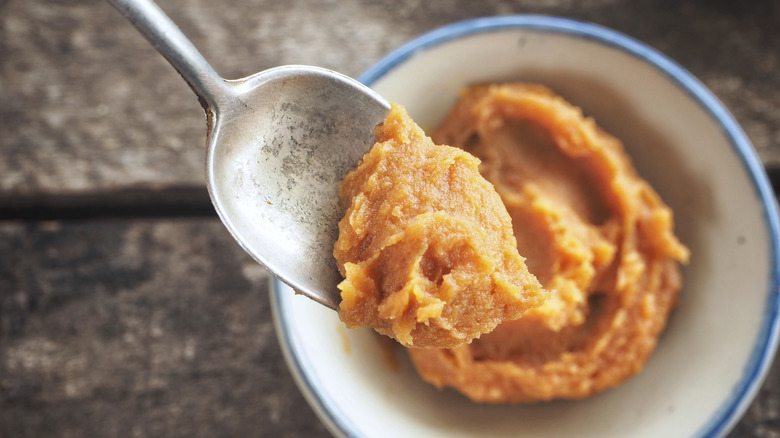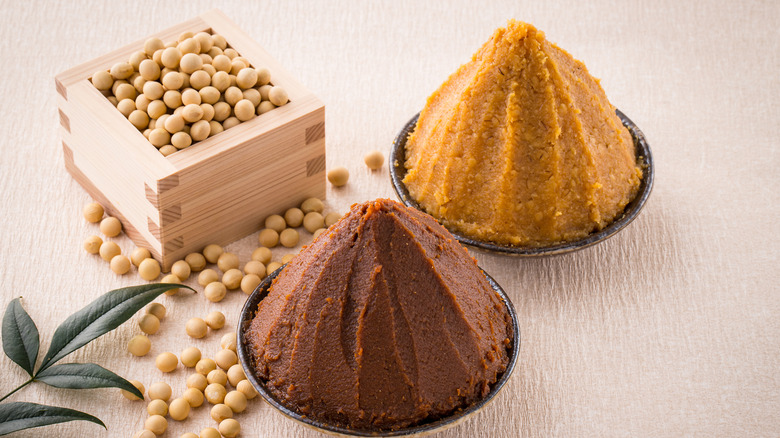Why Miso Is The Secret Weapon That Should Be In Your Pantry
If you enjoy Japanese food, you'll probably think of miso as the main ingredient of the flavorful soup that often accompanies your meal. But miso is more than a soup base — it's one of the most commonly used ingredients in Japanese cuisine.
Miso starts out as a fermented soybean mix to which salt and koji — which is a type of fungus — is added. Depending on the type of flavor a producer wants his miso to have, rice, barley, or wheat can also be added to the soybean and koji mix. The taste of miso varies, and depends entirely on where and how it has been fermented (via MAIDO!). The existence of local and regional miso styles explains why there are a thousand or so types of miso available today.
Miso is characterized according to color
Miso is generally categorized according to color: there is white miso, red miso, and mixed. White, or shiro miso, has a lower soybean content than the other types of miso, and it is fermented for the least amount of time. Because it is subtly flavored and sweet, shiro miso is also considered a "starter" miso, for those who might want to experiment with the ingredient but don't want to commit to stronger or heavier flavor. Shiro is most often used in miso soup or as part of a salad dressing (the umami flavor of the miso will give it a punch). You can even use it to make miso fudge brownies.
Red miso carries the strongest flavors of the three miso types, because can be fermented for up to a year or more. Red miso doesn't actually just come in a red color — Miso Boom says that depending on its production method and fermentation period, "red" miso can actually come in colors that range from reddish-brown to black. Because it is such a strong ingredient, it can be mixed with the more subtle white miso to create aware (or mixed) miso, which allows for flavors to be adjusted to suit the needs and tastes of the cook that is blending them.
Miso can be used to add umami to many dishes
Why and how might a uniquely Japanese ingredient fit into an American pantry? For starters, miso is about as umami as umami gets, which means you can use it to up the ante on comfort food like chicken noodle soup. Bon Appétit suggests you use your imagination by adding miso to your peanut butter and jelly; blend it into herbs for a Japanese-style pesto; or in tahini for an out-of-this-world salad dressing.
You can add miso to butter to cook vegetables or to jazz up garlic bread. And believe it or not, miso can also be used in desserts like sweet potato pie. Before you experiment with miso, you just need to remember that white, sweeter miso is best when used in sauces, glazes, and baked goodies; red miso is a good secret ingredient for stews, marinades, and braises.


